Knowing when to start a garden is crucial for successful vegetable and flower gardening. The timing may vary depending on your location, as different regions have different start dates based on USDA Plant Hardiness Zones.
It is important to consider the soil’s temperature, as most plants thrive in temperatures between 65 and 75 degrees F. With cold-hardy vegetables, you can start planting earlier in spring, while it is best to wait until the danger of frost has passed for fruit plants. Starting seeds indoors is another option, but it is crucial to transplant them outdoors once daytime temperatures consistently reach above 60 degrees F.
Key Takeaways:
- The timing of starting a garden varies based on location and USDA Plant Hardiness Zones.
- Soil temperature and the danger of frost should be considered when starting different types of plants.
- Starting seeds indoors is an option but should be transplanted outdoors once temperatures consistently reach above 60 degrees F.
- Preparing the soil in the fall and hardening off seedlings can also contribute to a successful garden season.
Consult Your Local County Cooperative Extension for a Localized Calendar
To determine the precise start date for your garden, it is recommended to consult with your local county cooperative extension for a localized calendar. The USDA Plant Hardiness Zone Map divides North America into 13 separate zones, and the best time to start seeds and plant outdoors varies based on these zones. Timing is crucial for a successful vegetable garden, so consulting experts is highly recommended.
Your local county cooperative extension can provide you with a localized calendar that takes into account specific regional factors and planting windows. They are well-versed in the microclimates and soil conditions of your area, and can provide you with valuable information about when to start seeds and plants outdoors.
Whether you are a seasoned gardening veteran or a novice, consulting your local cooperative extension is essential for obtaining a localized calendar for gardening. They can provide you with information on when to start seeds indoors or outdoors, the ideal planting dates for your region, as well as other valuable tips and resources to help you succeed in your gardening endeavors.
Don’t let a lack of knowledge about the ideal planting time for your region prevent you from achieving a successful garden. Reach out to your local county cooperative extension and get a localized calendar so you can start your garden with confidence.
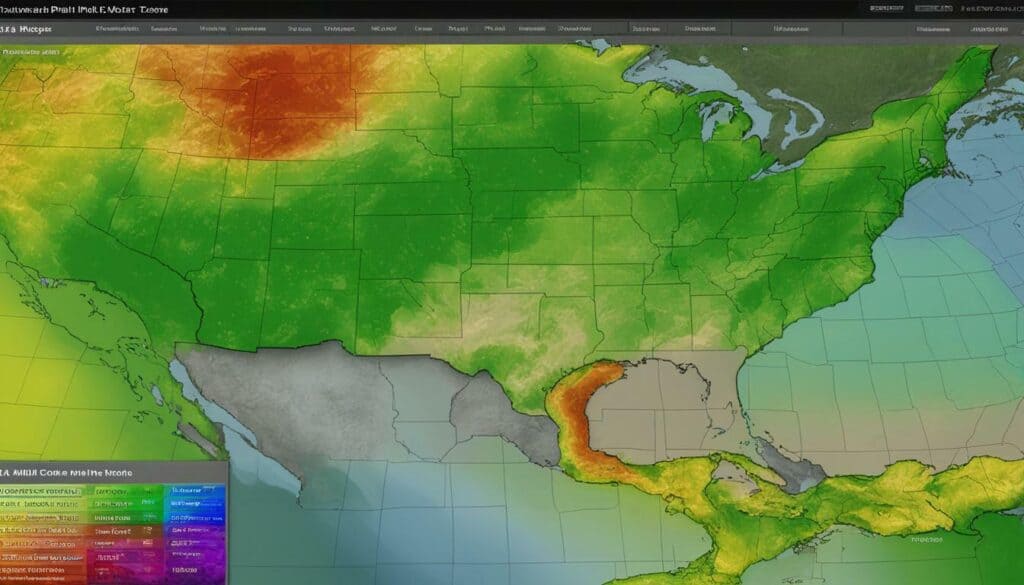
January: Prepare a Garden Map and Order Seeds and Seedlings
In January, it’s time to start preparing for your garden by creating a map of your garden beds and ordering seeds and seedlings. This will save you time and money in the long run and ensure a successful growing season.
Start by sketching out your garden beds and deciding what plants to grow where. This will help you rotate your crops each year and keep track of what was planted where and when. If you’re unsure of what to plant, consult with your local county cooperative extension for recommendations based on your specific location and climate.
| Tip: | Make notes on your map about what plants grew well and what didn’t. This will help you make adjustments for next year’s garden. |
|---|
After creating your garden map, it’s time to order your seeds and seedlings. Start by perusing seed catalogs and ordering early, as popular varieties can sell out quickly. Look for words like “new” and “improved” to take advantage of research advances. If you prefer to start with seedlings, make a shopping list of what you’ll buy at the nursery. Begin with a small assortment of vegetables that are easiest to grow and add to your selection as you gain confidence and experience.
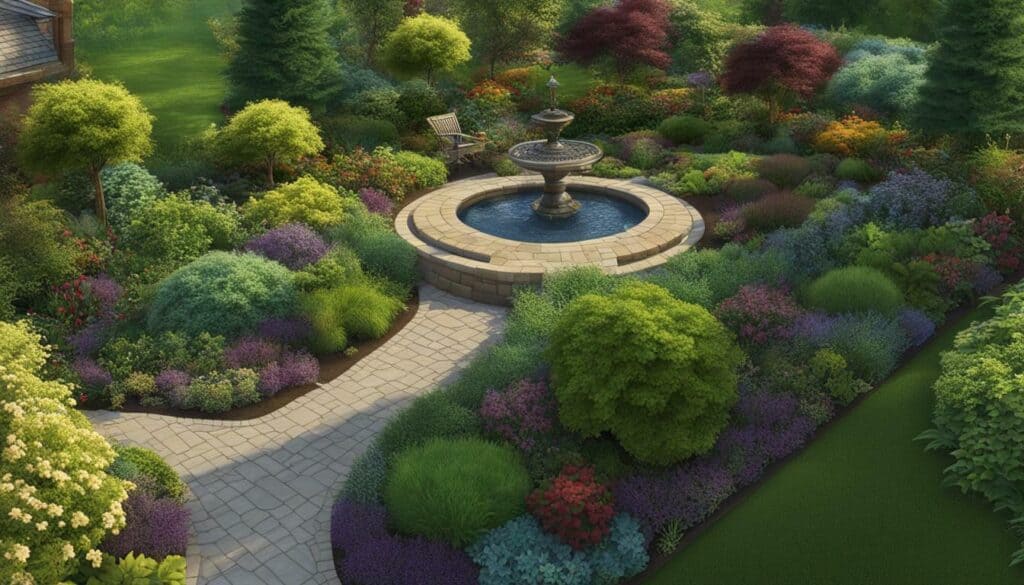
By taking these steps in January, you’ll be well on your way to a bountiful garden come planting season.
February: Finalize Seed Orders and Gather Tools and Supplies
As February arrives, it’s important to finalize your seed orders and gather all the necessary tools and supplies for your garden. To ensure a successful planting season, start by creating a chart of the ideal planting dates for each variety of seed based on the last frost date in your area. Organize the seeds in chronological order and make a shopping list for any necessary supplies.
Consider purchasing growing mix, seed trays, and peat pots if you haven’t already. Take inventory of your gardening tools and fill in any gaps in your collection. Clean and sharpen the tools you already have, and consider investing in a new garden hose and gloves. These simple steps will make your gardening chores easier and more enjoyable.
If the ground is workable, February is a great time to plant bare root perennial vegetables like asparagus, artichoke, horseradish, and rhubarb. These plants establish themselves quickly and produce a bountiful harvest year after year. Inside, start seeds for cool-season vegetables like broccoli, cabbage, kale, lettuce, spinach, and onions. With a little planning and preparation, February can be a productive month in the garden.
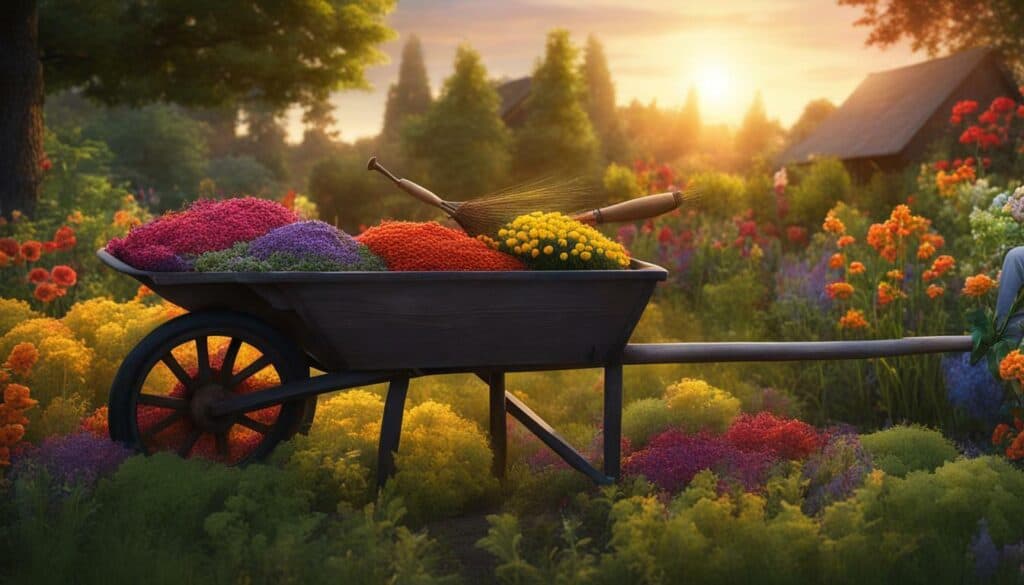
In the next section, we will discuss the importance of checking and amending your soil in March.
March: Check and Amend the Soil.
In March, it’s a good idea to check the condition of your soil and make any necessary amendments to improve its fertility and balance. Testing the soil’s pH level is essential, as most vegetables prefer slightly acidic soil with a pH range of 6.0 to 6.8. A pH test kit can help you determine if your soil is within the desired range. If your soil needs adjustment, organic matter such as sulfur, pine needles, or peat moss can be used to increase its acidity, while lime can be used to decrease it.
It is also a good idea to amend the soil yearly by adding conditioners such as compost, peat moss, or coir. These conditioners improve the soil’s texture and fertility. Perennial vegetables such as asparagus can be given a boost by “side dressing” with organic compost or aged manure.
If the soil is beyond saving, building raised beds and filling them with good soil is a viable alternative. This option also provides you with better control over the soil’s quality and composition.
When it comes to planting, warm-season crops like tomatoes, peppers, eggplants, and squash can be started from seeds indoors. However, before planting cool-season crops outside such as kale, lettuce, spinach, and onions, it is important to check the soil temperature using a garden thermometer and ensure that it is at or above 40°F. It is also advisable to wait until the end of the month to plant peas, especially if the ground is wet and muddy, as working the soil too soon can potentially destroy it.
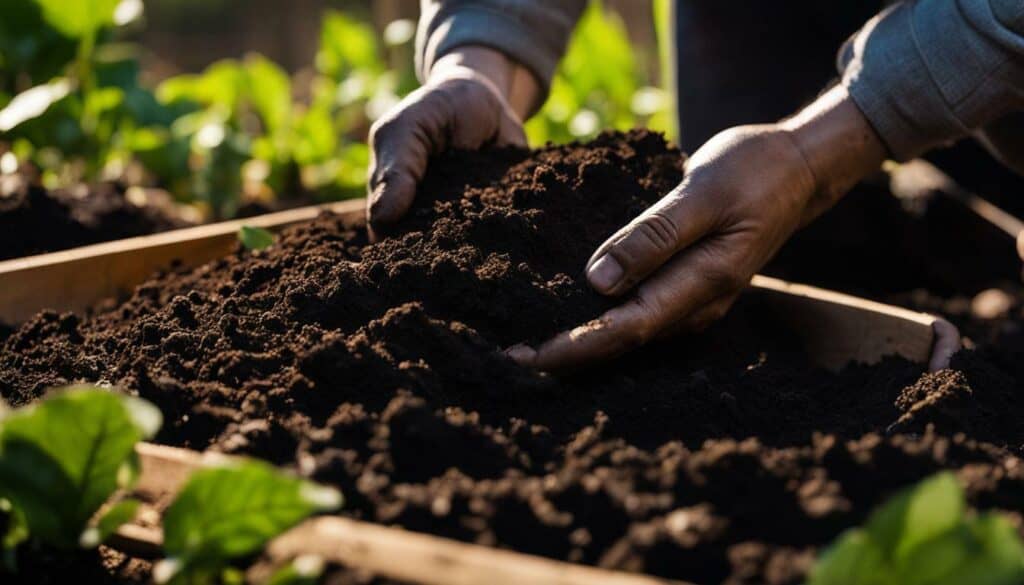
To ensure that your garden thrives, taking care of the soil is just as important as caring for the plants themselves. By checking and improving the soil’s condition in March, you set the foundation for a successful gardening season.
April: Start Planting Warm-Season Crops
As April arrives, it’s time to start planting your warm-season crops that require higher temperatures to grow successfully. However, before you begin planting, it’s crucial to consider your USDA Plant Hardiness Zone and consult with your local county cooperative extension for a localized calendar that highlights the ideal planting times.
In January, you can start by preparing for the growing season. Create a garden map and order your seeds and seedlings. In February, finish up any remaining seed orders and gather the necessary tools and supplies. In March, it’s time to focus on soil preparation by checking the pH level and amending the soil if necessary. Start planting cool-season crops outdoors and begin starting seeds of warm-season crops indoors.
When April arrives, continue to check the soil temperature, and begin planting warm-season crops when it consistently registers at 60°F or above. It’s a good time to start transplants and seedlings for early-season crops and begin setting them out. Make sure to water well and apply mulch to suppress weeds.
It’s crucial to note that planting too early can lead to poor germination, while planting too late can lead to stunted growth. So, make sure to keep an eye on the temperature and soil moisture and adjust accordingly.
Follow the necessary steps to ensure that your plants are healthy and properly nourished. Continue to water at the right time and protect your plants from frost if necessary. A successful gardening season begins with taking the necessary steps and considering the appropriate planting times for your region.
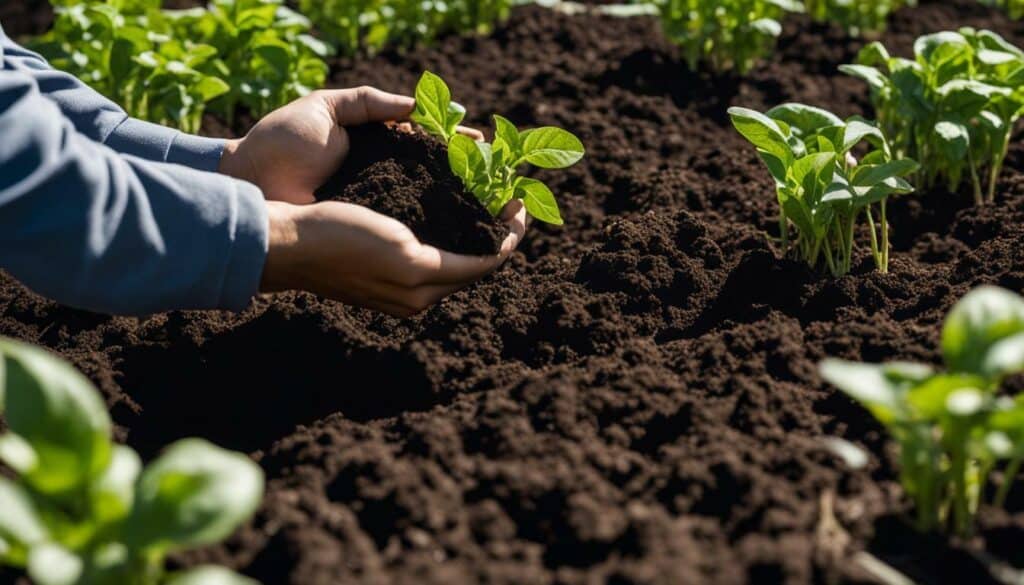
May: Plant Heat-Loving Crops
May is the perfect time to plant heat-loving crops such as tomatoes and peppers, as they thrive in the warmer temperatures. However, before starting, it’s important to consider your specific region and the USDA Plant Hardiness Zone you are in. This will help you choose the appropriate plants that can survive the climate in your area.
The soil should be thawed, somewhat dry, and workable before planting. The ideal soil temperature for most plants is between 65 and 75 degrees F. Some cold-hardy vegetables such as radishes, lettuce, spinach, Swiss chard, broccoli, and peas can be planted early in containers filled with fresh soil if the ground is still too wet. Fruits are generally not cold-hardy and should be planted after the danger of frost has passed.
It’s recommended to start seeds indoors for tomatoes and other heat-loving plants and transplant them outdoors when daytime temperatures consistently reach above 60 degrees F. This ensures that the plants have a strong start before being exposed to the elements.
Additionally, it’s important to prepare the garden in the fall by tilling the soil and adding organic matter to improve soil structure and nutrient levels. Proper spacing and protecting plants from frost are also essential for a successful garden. By following these tips and guidelines, you can have a thriving garden full of delicious heat-loving crops.

Factors to Consider When Starting a Garden
When starting a garden, there are several factors to consider in order to ensure success and productivity. One of the most important factors is timing, as planting at the wrong time can lead to poor growth and yield. It is essential to determine the optimal time to start seeds and plant outdoors based on your specific region. The USDA Plant Hardiness Zone Map can help with this, as it divides North America into 13 zones, each with different start dates for planting.
It is also advisable to consult with the county cooperative extension in your area for a localized gardening calendar that takes into account specific regional factors and planting windows.
Another critical factor to consider is what to plant in your garden. You can choose between a vegetable garden, herb garden, or flower garden. If you opt for vegetables and herbs, select those that your family enjoys or is willing to try. If you prefer flowers, decide between annuals that bloom all summer but need to be replanted or perennials that have shorter bloom times but return year after year.
The location of your garden is equally important. Most vegetables and flowering plants require 6-8 hours of full sun each day, so choose a spot that receives adequate sunlight. If your yard is mostly shady, there are still plants that can thrive in those conditions, such as hostas or outdoor ferns. Access to water is also important, so ensure your garden has easy access to a water source.
Preparing the ground for your garden is a crucial step. Clear the area of weeds and sod, either by cutting it out or using the lasagna gardening method. Testing and improving your soil is essential for plant growth. You can have a soil test done to determine its nutrient levels and amendment needs. Adding plenty of organic matter, like compost, is generally beneficial for soil health.
When it comes to planting, it is vital to know the optimal soil temperature for your plants. Most plants prefer soil temperatures between 65 and 75 degrees Fahrenheit, but some can tolerate lower temperatures. Seed packets and plant tags provide specific instructions, and using a soil thermometer can help determine if the soil is at the right temperature.
If you live in a colder area, consider planting cold-hardy crops that can tolerate lower temperatures and frost, such as radishes, lettuce, spinach, Swiss chard, broccoli, and peas. Starting seeds indoors and using containers can also provide more flexibility in planting times and protect plants from late frosts.
By considering these factors and following expert advice, you can ensure a successful and rewarding gardening experience.

Selecting the Right Garden Spot and Preparing the Ground
Selecting the right garden spot with ample sunlight is crucial for the healthy growth of your plants. Most vegetables and many flowering plants require 6-8 hours of full sun each day. To determine which areas of your yard receive full sun, partial shade, or full shade, observe the yard throughout the day. Additionally, ensure that the spot has easy access to a water source.
Preparing the ground involves clearing the area of weeds and sod. The method of clearing depends on your timeline and preferences. One option is to create a map of the beds and rotate crops each year. Another option is to start plants from seed or buy seedlings. It is important to plant seeds at the right time based on seed packets and local climate information.
Testing and improving the soil is crucial for successful gardening. Conducting a soil test through the county cooperative extension can help determine the nutrient levels and acidity of the soil. Adding organic matter and compost to the soil can help improve its texture and fertility.
Once the ground is prepared, it is important to choose the right plants for the garden. Considerations include the type of garden (vegetable, herb, or flower), plant hardiness zones, and personal preferences. Some plants are more tolerant of cold weather and can be planted earlier in the season. It is important to follow planting guidelines and instructions for each specific plant. Watering at the right time is also crucial, and it is important to keep seedlings moist but not wet to avoid rot. Protecting plants from frost is important, and using frost covers or blankets can help.
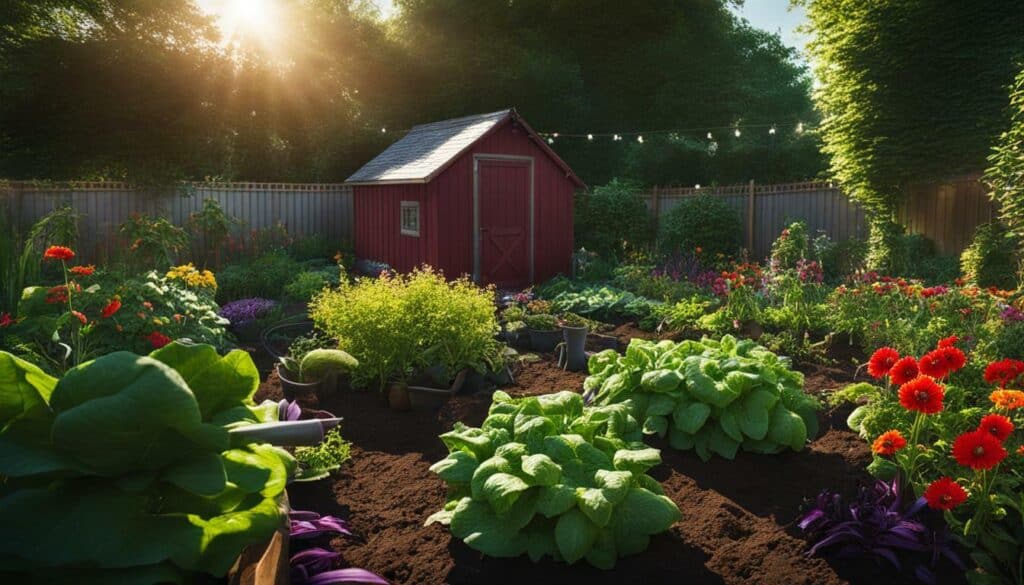
In conclusion, selecting the right garden spot and preparing the ground are important steps in successful gardening. Considering climate, sunlight requirements, and soil conditions are crucial in determining when and where to start a garden. Proper preparation and care can lead to a thriving garden and a bountiful harvest.
Testing and Improving Your Soil
Before planting, it’s important to test your soil to determine its pH level and nutrient composition. You can purchase a soil test kit at your local garden center or contact your local county cooperative extension for assistance.
Once you determine your soil’s pH and nutrient levels, you may need to adjust it to meet your plants’ needs. Organic matter, such as compost or aged manure, can be added to improve soil structure and provide necessary nutrients. Be sure to mix organic matter into the soil thoroughly to ensure even distribution.
Creating a map of your garden beds and rotating crops each year can also help improve soil quality and prevent the buildup of pests and diseases. Consider planting cover crops in the off-season to further enrich your soil.
When starting seeds indoors, use a high-quality potting mix that is well-draining and nutrient-rich. Once the soil temperature reaches 40°F, you can start seeding warm-season crops indoors. In April, when the soil temperature consistently registers at 60°F or above, you can begin planting warm-season crops outside. Use row covers to protect plants from late-season frosts.
In May, take advantage of higher temperatures and longer days to do the bulk of your planting. Water your garden at the right time to ensure proper hydration, and consider planting cold-hardy vegetables in early spring. When planting fruits, wait until all danger of frost has passed.
Preparing your garden in the fall by tilling the soil and adding organic matter can help improve soil structure and set the stage for a productive garden next year. When planting out seedlings, harden them off properly to avoid transplant shock. Provide protection from frost if necessary.
By testing and improving your soil, you can ensure a successful and productive garden. Remember to consult with your local county cooperative extension for specific advice and tips tailored to your region.
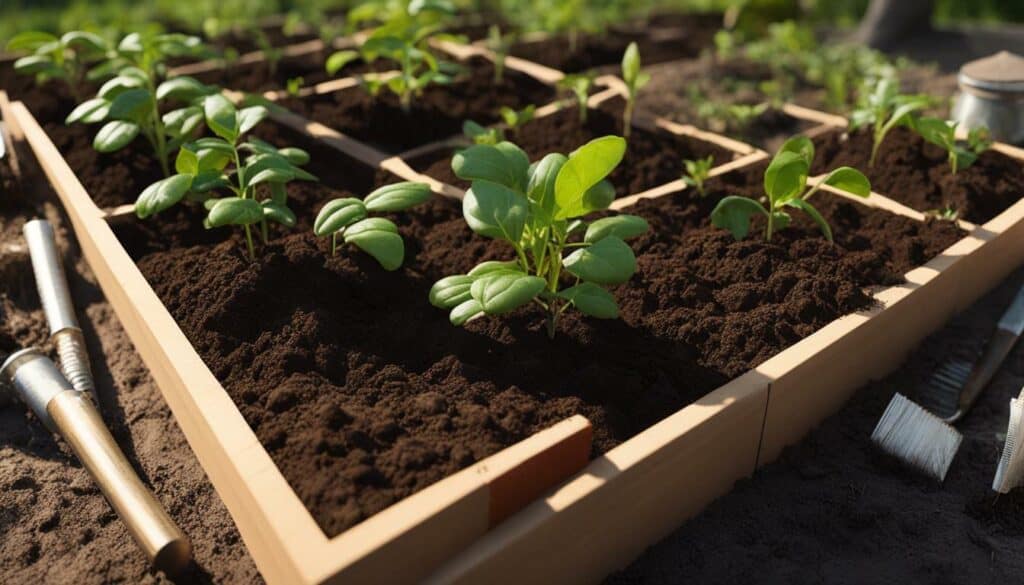
Preparing Planting Beds and Choosing Appropriate Plants
Properly preparing your planting beds by loosening the soil and selecting the appropriate plants is essential for a successful garden. Timing is also important, and it is recommended to consult the USDA Plant Hardiness Zone Map for specific regional information.
In January, it is advised to create a garden map and start ordering seeds or seedlings. In February, you can start finalizing seed orders and gather the necessary tools and supplies for seed starting. In March, testing the soil’s pH and amending it if necessary and starting seeds of warm-season crops indoors are crucial steps.
In April, it is time to start planting warm-season crops and adding mulch to suppress weeds. By May, the temperature is typically ideal for planting most crops. However, factors such as soil texture, moisture levels, and temperature should be considered when deciding on the planting date. It is also important to choose plants that are suitable for the specific climate and to plant cool-season vegetables before warmer weather arrives.
Protecting the plants from frost, especially in the early stages, is also crucial. By properly preparing your planting beds and selecting appropriate plants, you can ensure a bountiful and successful garden.
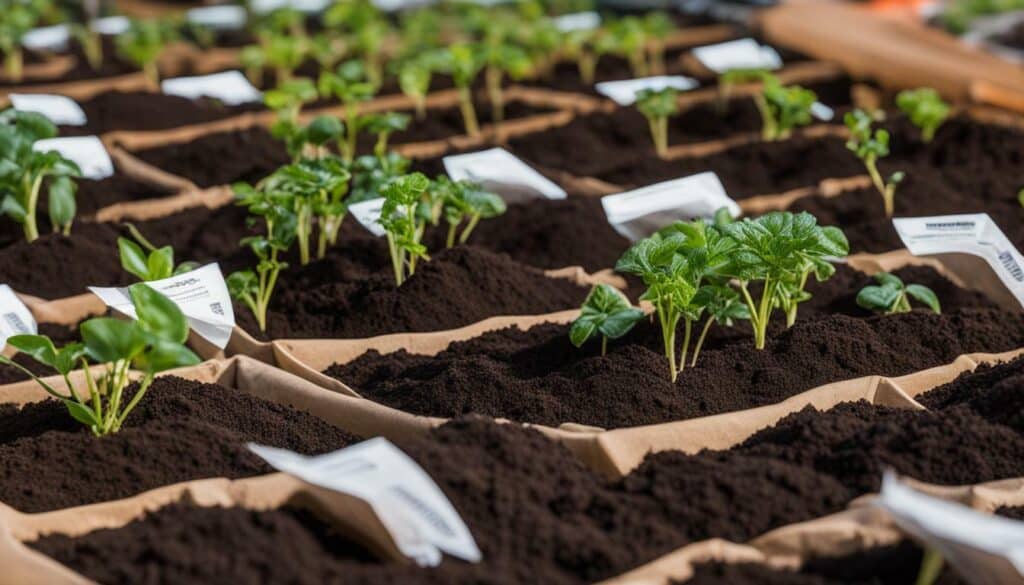
Conclusion
Knowing when to start a garden is crucial for a fruitful and enjoyable gardening journey. As discussed, factors such as the USDA Plant Hardiness Zone, soil temperature, and local weather conditions should be considered. If you are a beginner, it is advisable to start small and gradually expand your garden. Preparing the ground by clearing weeds and sod, testing and improving soil quality, and creating planting beds are essential steps towards a successful garden.
Choosing appropriate plants based on your climate, soil, and sunlight conditions is equally important. Watering at the right time and protecting plants from frost are also crucial for a thriving garden.
By following these tips and with proper planning and care, gardening can be a rewarding and enjoyable experience. Remember to consult with your local county cooperative extension for a localized calendar, and consider starting your garden in the optimal gardening season for your area. Happy gardening!
What are the Tips and Tricks for Gardening in Your Ultimate Guide to Information Gardening?
Looking to sharpen your green thumb? Our ultimate information gardening tips and tricks guide has got you covered! From choosing the right plants for your climate to maximizing your space with vertical gardening techniques, our comprehensive guide provides all the essential knowledge you need to create a thriving garden. Whether you’re a beginner or an experienced gardener, these tips and tricks will help you cultivate the garden of your dreams.
What Are the First Steps to Starting a Garden?
Before going gardening basics, consider the location and sunlight your garden will receive. Prepare the soil by removing weeds and debris, improving its quality if necessary. Choose plants suitable for your climate and make a plan for their arrangement. Finally, water your plants regularly and monitor their growth to ensure a successful garden.
FAQ
Q: When is the best time to start a garden?
A: The timing may vary depending on your location and USDA Plant Hardiness Zones. It is recommended to consult with your local county cooperative extension for a localized calendar.
Q: What should I do in January to start a garden?
A: In January, you can create a map of your garden beds and order seeds and seedlings.
Q: What tasks should be done in February for starting a garden?
A: In February, finalize your seed orders and gather the necessary tools and supplies for your garden.
Q: What should I do in March to prepare for gardening?
A: March is a good month to check and amend the soil in your garden.
Q: What should I plant in April for my garden?
A: In April, you can start planting warm-season crops in your garden.
Q: What crops should I plant in May?
A: May is ideal for planting heat-loving crops like tomatoes and peppers in your garden.
Q: What factors should I consider when starting a garden?
A: When starting a garden, consider the garden spot with ample sunlight, clear the ground of weeds and sod, test and improve your soil, prepare your planting beds, choose appropriate plants for your climate, and water at the right time.
Q: How do I select the right garden spot and prepare the ground?
A: Choose a garden spot with ample sunlight and clear the ground of weeds and sod before starting your garden.
Q: Why is testing and improving the soil important?
A: Testing the soil’s pH and nutrient levels and providing necessary amendments improve the quality of your soil, leading to a better garden.
Q: How do I prepare planting beds and choose appropriate plants?
A: Prepare your planting beds by loosening the soil and selecting appropriate plants that are suited to your specific climate.
Source Links
- https://www.realsimple.com/home-organizing/gardening/outdoor/month-by-month-vegetable-gardening-guide
- https://www.familyhandyman.com/article/when-to-start-a-garden/
- https://www.bhg.com/gardening/yard/garden-care/ten-steps-to-beginning-a-garden/
- https://www.thespruce.com/how-to-start-a-garden-from-scratch-2132778
- https://www.almanac.com/vegetable-gardening-for-beginners
- https://www.hillsboroughcounty.org/government/departments/extension
- https://edis.ifas.ufl.edu/publication/VH021
- https://ourstoneyacres.com/what-seedlings-can-you-start-in-january
- https://agr.illinois.gov/consumers/communitygarden/prepare-garden.html
- https://parkseed.com/what-to-do-in-the-garden-in-february/a/what-to-do-in-the-garden-in-february/
- https://sowtrueseed.com/blogs/monthly-garden-schedule-by-zone/zone-6-monthly-garden-calendar-chores-and-planting-guide
- https://harvesttotable.com/seed_starting_february_vegetab/
- https://growingspaces.com/soil-amendment-guide/
- https://www.almanac.com/soil-preparation-how-do-you-prepare-garden-soil-planting
- https://www.ufseeds.com/what-to-plant-in-april.html
- https://ourstoneyacres.com/april-planting-guide-zones-5-6
- https://extension.illinois.edu/blogs/good-growing/2020-03-27-starting-garden-warm-season-vegetables
- https://gardening.org/heat-loving-vegetables-to-grow-in-a-summer-garden/
- https://www.allaboutgardening.com/heat-resistant-vegetables/
- https://www.almanac.com/vegetables-grow-hot-weather
- https://www.growveg.com/guides/10-things-i-wish-id-known-before-starting-a-vegetable-garden/
- https://miniurbanfarm.com/things-to-know-before-starting-a-garden/
- https://www.thespruce.com/starting-a-vegetable-garden-1403411
- https://sebsnjaesnews.rutgers.edu/2020/04/choosing-the-right-location-for-your-vegetable-garden/
- https://hort.extension.wisc.edu/articles/beginning-vegetable-garden-basics-site-selection-and-soil-preparation/
- https://www.almanac.com/where-put-vegetable-garden
- https://www.almanac.com/content/3-simple-diy-soil-tests
- https://extension.oregonstate.edu/gardening/soil-compost/how-do-i-test-my-garden-soil
- https://www.thespruce.com/planting-flower-beds-2132568
- https://www.wikihow.com/Start-a-Garden
- https://www.betterhealth.vic.gov.au/health/healthyliving/gardening-for-children

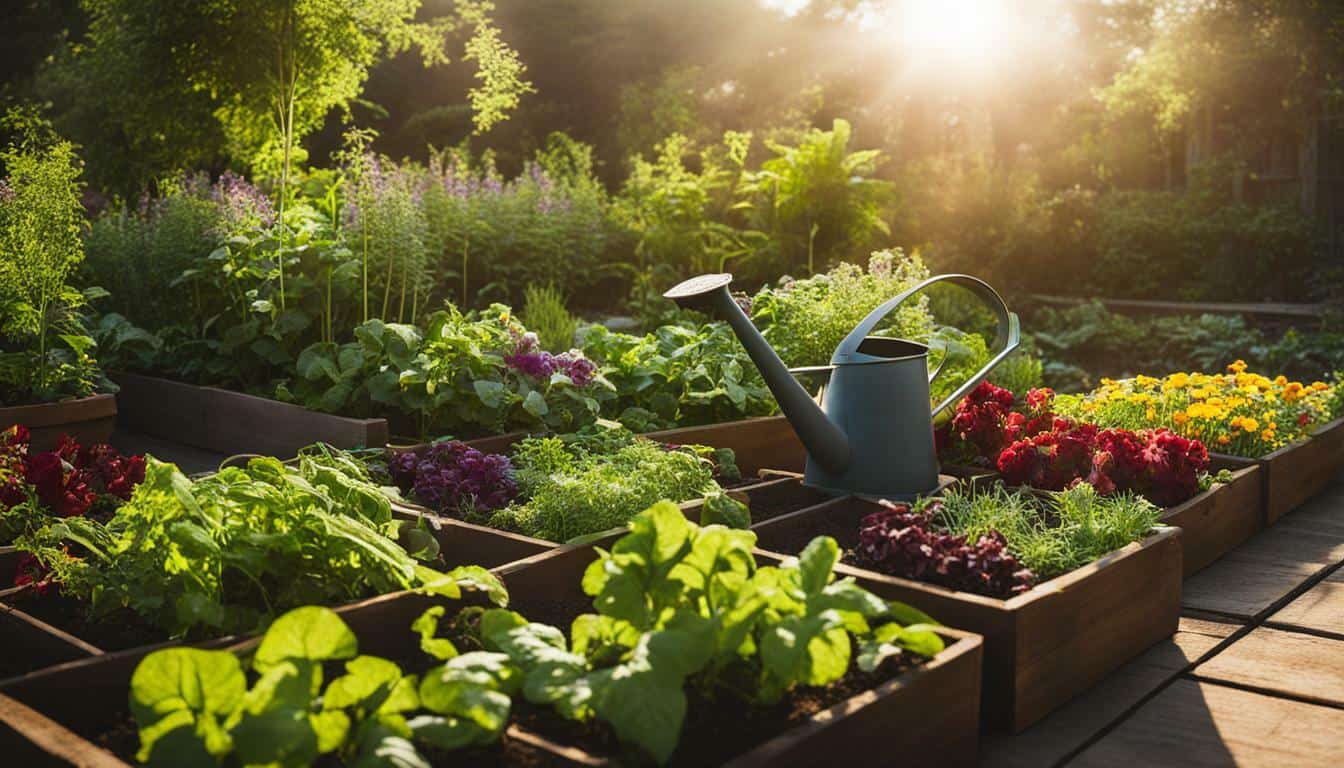



Leave a Reply